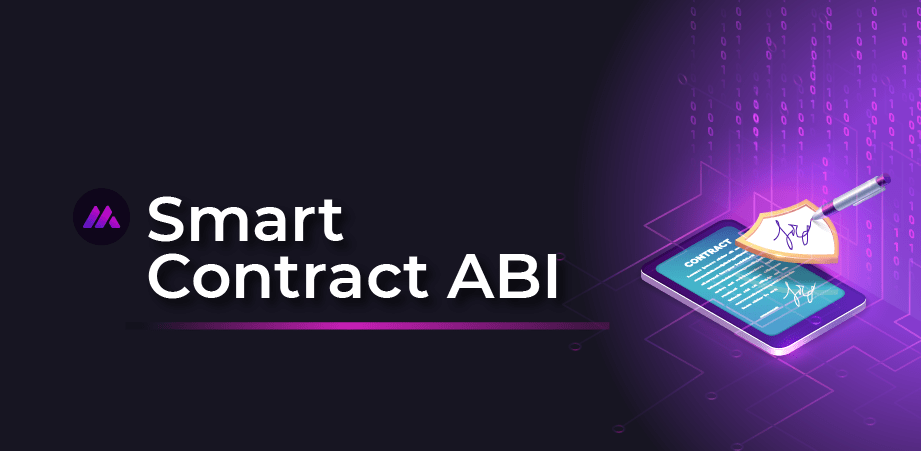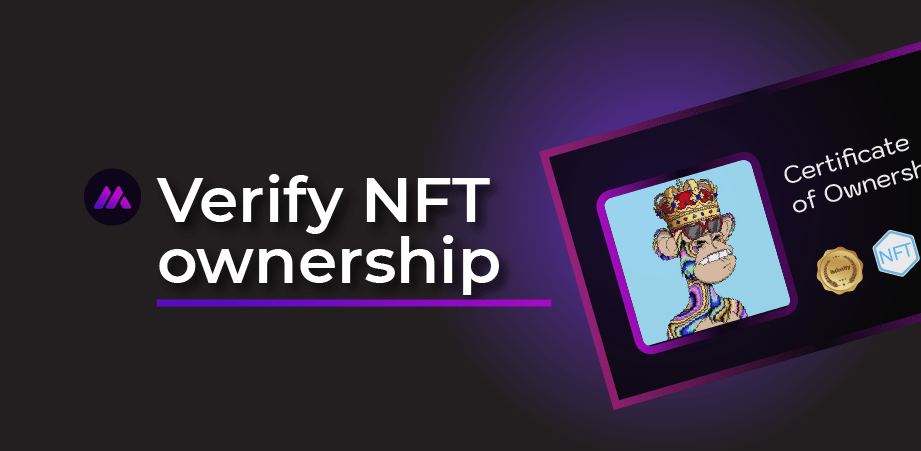|
Getting your Trinity Audio player ready... |
The cryptocurrency revolution took the world by storm. While Bitcoins paved the way for digital payments, they were unable to extend to other functionalities. Then, in 2017, the second major blockchain, Ethereum, opened the doors to newer features like non-fungible tokens, decentralized finance, and more. All these functionalities were underpinned by programs that developers can create and automatically execute based on specific criteria— the Smart Contracts. Eventually, the need was felt for the smart contracts within a blockchain to communicate with external applications or smart contracts of other chains. This led to another idea that serves as an interpreter between smart contracts of one chain and external applications – the Smart Contract ABI. This article delves into Smart Contract ABI, why it’s needed, how to use it, how to find your ABI and more. Let’s get started.
Contents
What is Smart Contract ABI?
At its most basic level, the Smart Contract Application Binary Interface (ABI) offers the means for blockchain smart contracts to interact with external applications and other contracts. This feature is particularly important in scenarios where useful data needs to be passed between smart contracts, for instance. Technically, the Application Binary Interface refers to specific functions defined in a smart contract to call in the smart contract. In programming terminology, ABI contains the arguments or parameters that must be sent to the contract and the values the smart contract expects. Defined in a JSON format, the ABI exists as a readable function definition inside the smart contract.
Why do you need Smart Contract ABI?
To understand the need for Smart Contract ABI, let’s step back to Web 2.0. In the Web 2.0 ecosystem, Application Programming Interfaces (APIs) are the middleware that allows disparate applications to communicate with each other. Communication occurs between servers, the central repository of information, and the applications that receive the data via requests.
There’s no idea of centralized servers in the case of Web 3.0 or blockchains. The nodes behave as servers, while smart contracts act as functions on the blockchain. That said, the external applications and other smart contracts need to interact with this smart contract. This is where the Smart Contract ABI comes in.
This is a partial explanation of the need for ABI. Let’s delve a little further. Smart contracts are programs that execute based on certain specific conditions, and they could be on or off-chain. These contracts are written in high-level programming languages like Solidity, which programmers use. However, they are executed on the Ethereum Virtual Machine (EVM) as bytecode in a binary format. Humans can’t read this bytecode, so an interpreter is required. ABI performs the task of allowing anyone developing a smart contract to interact between the application written in a high-level programming language and the EVM-compatible bytecode.
What are the building blocks of a Smart Contract ABI?
An ABI file lets the smart contract interact or communicate with third-party applications. It essentially consists of two components:
- Function definitions: They define the name, inputs, outcomes, and payment acceptance conditions of the smart contract.
- Event definitions: They define the name, data, and behavior of events that are generated by a smart contract.
It’s imperative to ensure that the function calls and event subscriptions adhere to the proper format to ensure smooth communication between the smart contract and other outside applications.
What is Encoding and Decoding in Smart Contract ABI?
Smart Contract ABI consists of two important processes. They are:
Encoding
It is the process of turning the data into binary format so that it can be easily stored and transmitted over the network. For the smart contract functions, events, and data to interact with the blockchain, they must be encoded.
Decoding
It is the reverse process, which involves converting the binary data into a human-understandable format so that it’s easier for smart contracts to read the data from third-party applications. With smart contracts, it is vital to use the appropriate encoding and decoding protocols.
How to use ABI?
Let’s take a look at some of the major steps to use ABI:
Generation
With tools like Hardhart/Truffle, you can generate the Smart Contract ABI automatically in just a matter of time. Alternatively, you may create the ABI manually using the Solidity Compiler NPM package. Once the package is installed, run the ‘solcjs contractname.sol– abi’ command in a node. If done accurately, it creates a .abi file successfully.
Execution
ABI serves as the interpreter between the application in a high-level coding language and the bytecode-enabled EVM. So, to execute any functions on the smart contract, the ABI and the contract’s address on the chain are needed.
Encoding
As all communication takes place in bytecode, it can’t be interpreted or understood by programmers. Fortunately, several common compilers, like Remix, adeptly perform this task.
How to find your ABI?
Here, we consider two scenarios:
Verified or Published
If the Smart Contract ABI is published on the block explorer, it can be easily located. You just need to enter the contract’s address in the console.
Unverified or Unpublished
If you don’t wish to publish the contract’s source code, you can manually add the Smart Contract ABI to the console. After this, the source code is compiled into the bytecode. This further helps in registration while creating a JSON representation. Some of the places to find the ABI are:
- Hardat: /artifacts/contracts/[ContractName].json,
- Foundry: /out/[ContractName.sol]/[ContractName].json
Wrapping Up
As the Web3 ecosystem takes shape, there will be a greater need for blockchains, particularly smart contracts, to communicate or fetch data from external apps or other smart contracts. This will further enhance the importance and relevance of Smart Contract ABI. To learn more about this, feel free to reach out to us here.



